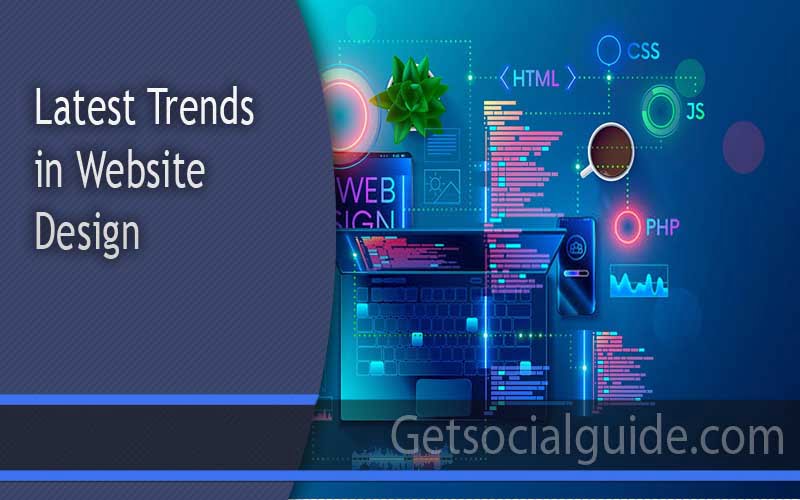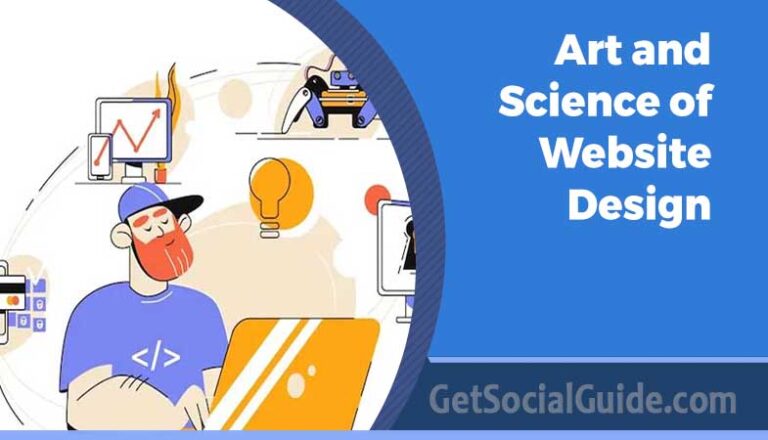Embracing the Latest Trends in Website Design
In the ever-evolving world of web design, staying up-to-date with the latest trends is crucial to creating engaging and visually appealing websites. As technology advances and user expectations change, designers are constantly finding innovative ways to enhance user experiences and make websites stand out. In this blog, we will explore the top 10 latest trends in website design that are shaping the digital landscape in 2023.
Dark Mode:
Dark mode has gained immense popularity recently due to its sleek and modern appearance. It not only reduces eye strain but also adds a touch of elegance to websites. Many popular platforms and apps have already embraced this trend, and web designers are now incorporating dark mode into their designs to provide users with an alternative visual experience.
Neomorphism:
Neomorphism is a design technique that blends minimalism and skeuomorphism, creating realistic and tactile elements on the screen. It focuses on creating a sense of depth through subtle shadows, gradients, and highlights. This trend adds a unique and futuristic touch to websites, making them more engaging and interactive.
Asymmetrical Layouts:
Moving away from traditional grid-based layouts, designers are now embracing asymmetrical layouts to create visually dynamic websites. Asymmetry adds a sense of creativity and unpredictability, capturing users’ attention and providing a memorable browsing experience. This is good for websites as it can intrigue the user and convince them to come back.
Microinteractions:
Microinteractions are small, subtle animations or visual feedback that respond to users’ actions. They enhance the overall user experience and make websites feel more interactive and responsive. From animated buttons to loading spinners, microinteractions are being cleverly incorporated into website designs to engage users and provide delightful moments.
3D and Immersive Experiences:
Advancements in technology have made it easier for web designers to incorporate 3D elements into their designs. These three-dimensional visuals create a sense of depth, realism, and interactivity, providing users with immersive experiences. From 3D product showcases to interactive storytelling, this trend is transforming how websites engage and captivate audiences.
Simplifying navigation menus has become a key trend in website design. By reducing clutter and focusing on essential elements, designers are creating intuitive and user-friendly navigation experiences. Minimalist navigation often involves using hidden menus, hamburger icons, or sticky navigation bars, allowing users to easily find what they’re looking for without feeling overwhelmed.
Bold Typography:
Typography plays a crucial role in website design, and in recent years, designers have been experimenting with bold and eye-catching typography. Large and expressive fonts are being used to create visual hierarchy, evoke emotions, and convey brand personalities. Combined with creative layouts, bold typography adds a strong visual impact to websites.
Immersive Video Backgrounds:
Video backgrounds have become a popular trend in website design, providing a captivating and immersive experience for users. By incorporating high-quality videos that relate to the website’s content or purpose, designers can effectively convey messages and evoke emotions, resulting in a memorable and engaging browsing experience.
Chatbots and AI Assistants:
Chatbots and AI assistants are becoming increasingly prevalent in website design, as they enhance user interactions and provide instant support. These intelligent virtual assistants can answer queries, provide recommendations, and guide users through websites, making the browsing experience more personalised and efficient.
Custom Illustrations and Graphics:
To create a unique and memorable brand identity, designers are leveraging custom illustrations and graphics in website design. Custom artwork adds personality and authenticity to websites, helping them stand out in a sea of generic designs. From hand-drawn illustrations to intricate animations, custom visuals are becoming a staple in modern web design.
Conclusion:
In the fast-paced digital landscape, staying updated with the latest trends in website design is crucial to creating captivating and user-centric online experiences. The trends discussed in this blog represent the current direction of web design, with a focus on enhancing user engagement, providing immersive experiences, and incorporating innovative elements. From the sleek and modern appeal of dark mode to the realistic and tactile nature of neomorphism, designers are constantly pushing boundaries to create visually striking and interactive websites. Asymmetrical layouts break away from traditional grids, adding a touch of creativity and unpredictability, while microinteractions and 3D elements bring websites to life, making them more engaging and immersive.
Simplicity and intuitive navigation are prioritised through minimalist navigation, while bold typography and immersive video backgrounds capture attention and convey messages effectively. The rise of chatbots and AI assistants revolutionises user interactions, providing personalised support and guidance. Lastly, custom illustrations and graphics allow websites to establish unique brand identities and stand out from the crowd. By embracing these latest trends, web designers have the opportunity to create exceptional digital experiences that not only captivate users but also align with their evolving expectations.
As we move forward, it’s essential for designers to keep an eye on emerging trends, as the digital landscape continues to evolve at a rapid pace. By staying informed and experimenting with new techniques, designers can push the boundaries of web design, creating websites that are not only visually stunning but also offer seamless user experiences. So, embrace the trends, experiment, and create websites that truly captivate and engage your audience in the ever-evolving world of website design.



